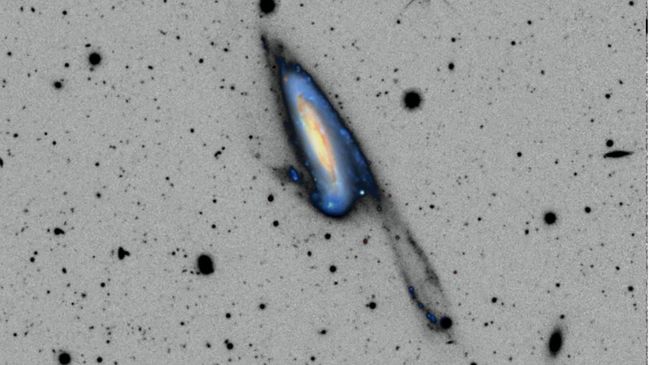ARRAKIHS, the Satellite on a Dark Matter Quest, Set to Launch in 2030: A Closer Look at Its Operation
The mission aims to investigate the dark matter halos surrounding 75 distinct galaxies.
Dark matter constitutes approximately 80 percent of the universe’s mass, yet its composition and behavior remain elusive to astronomers. A forthcoming mission by the European Space Agency (ESA), named “The Analysis of Resolved Remnants of Accreted Galaxies as a Key Instrument for Halo Surveys” (ARRAKIHS), seeks to address this mystery. Recently approved by the ESA, ARRAKIHS is scheduled for launch in 2030.

The rationale behind the belief in dark matter’s existence stems from its indirect observation through phenomena such as “dark matter haloes” enveloping galaxies like the Milky Way. Dark matter, being invisible to light, is detected through its gravitational effects, particularly influencing the rotation of galaxies. ARRAKIHS, named after the desert planet in the “Dune” series, is designed to scrutinize galaxies, focusing on their outer rims and the dwarf galaxies within dark matter haloes.
The mission’s plan involves examining 75 galaxies for 150 hours each, aiming to enhance understanding and compare observations with computational models. As an ESA “fast” (F-mission), ARRAKIHS is intended for a swift launch after selection and at a relatively low cost. ESA’s initial F-mission, the Comet Interceptor, is set for a 2029 launch, while ARRAKIHS is the second F-mission chosen in 2022.
ARRAKIHS faces key guidelines, launching within 8 years of selection and costing less than 175 million euros. The mission successfully cleared the mission design review in September, gaining approval for its specifics. The next step, Phase A/B, involves a detailed review of the spacecraft’s instruments and science objectives, marking a crucial phase toward realizing the mission’s goals. Pascale Jablonka, the astrophysicist leading ARRAKIHS’s science component, expressed excitement, noting the significance of progressing past the initial phase.
This article is republished from SpaceCom under a Creative Commons license. Read the original article.
Do not forget to share your opinion with us to provide you with the best posts !




0 Comments